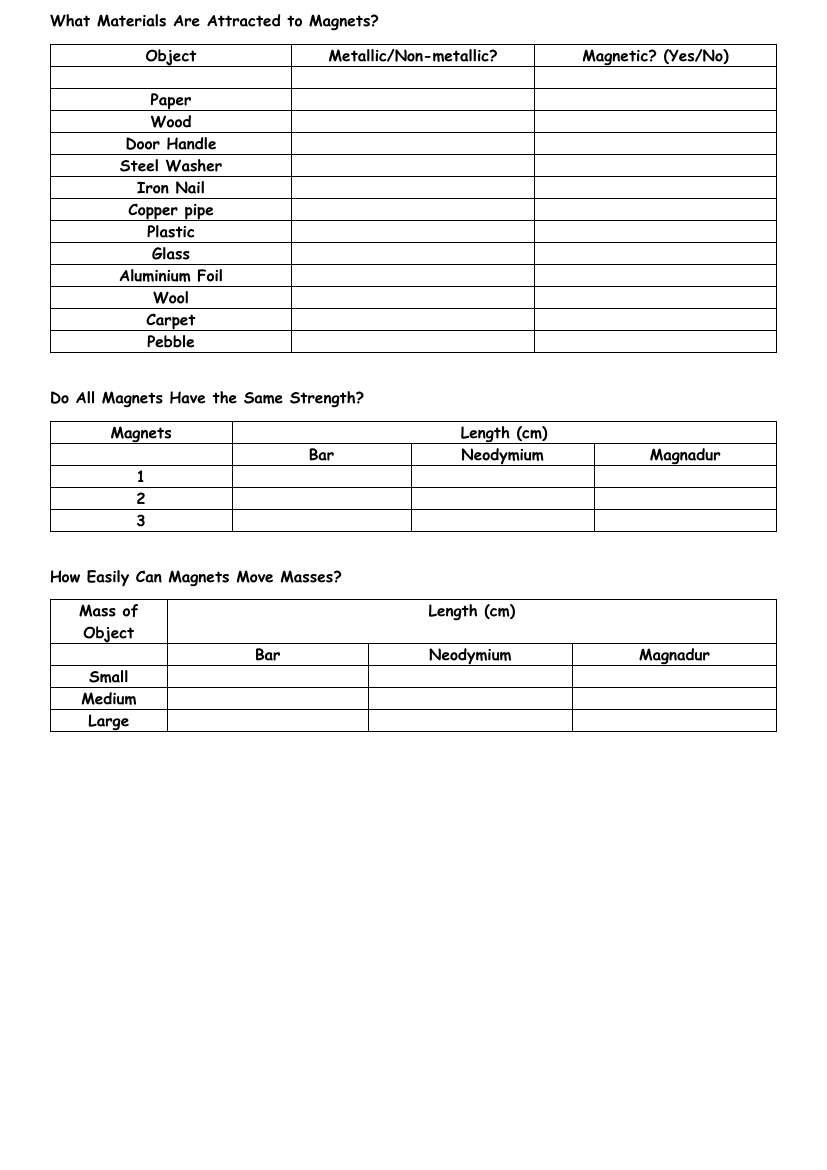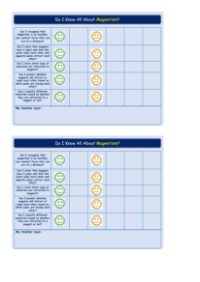Magnetism - Results Tables

Science Resource Description
Exploring the properties of magnetism involves understanding which materials are attracted to magnets. A study may include a results table listing various objects categorised by whether they are metallic or non-metallic, alongside a column indicating if they are magnetic. Typical objects assessed might include everyday items such as paper, wood, door handles, steel washers, iron nails, copper pipes, plastic, glass, aluminium foil, wool, carpet, and pebbles. The outcome of such an investigation reveals the magnetic nature of these materials, with entries marked 'Yes' or 'No' to indicate whether or not they are attracted to a magnet.
Further investigations into magnetism might examine the strength of different types of magnets, such as bar magnets, neodymium magnets, and magnadur magnets. The study might record the length of each magnet in centimetres to see if there is a correlation between size and magnetic strength. Another aspect of research could be how easily magnets can move objects of varying masses. Objects categorised by size—small, medium, and large—would be tested against the pulling power of different magnets, with their lengths measured to determine the effectiveness of each magnet's force. This type of experiment helps to understand not only which materials are magnetic but also the varying strengths of different magnets and their practical applications in moving objects.






